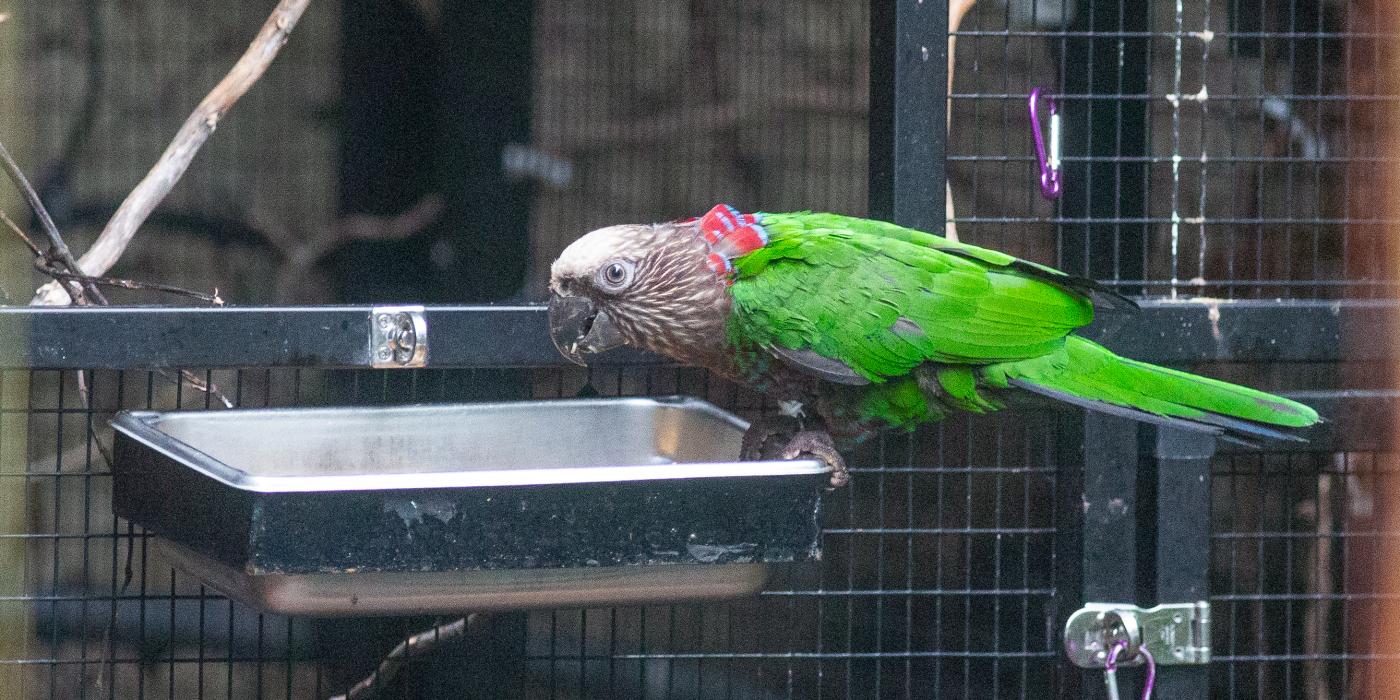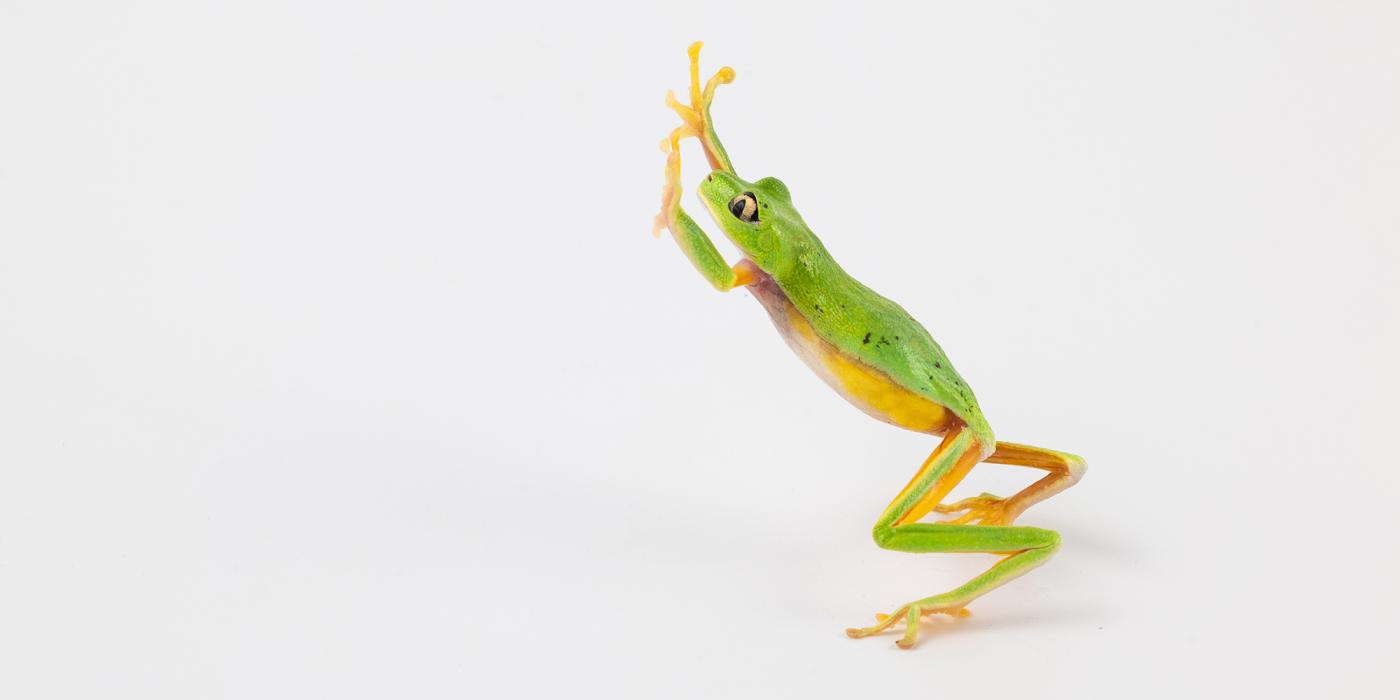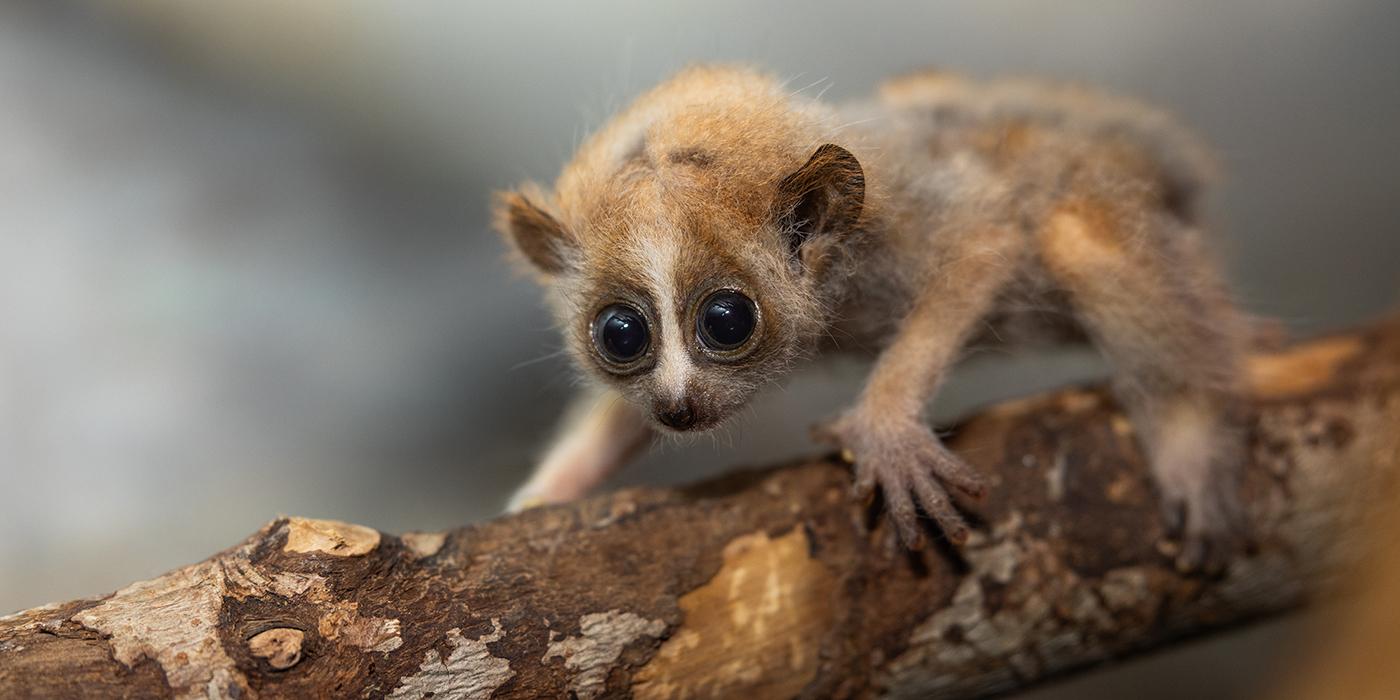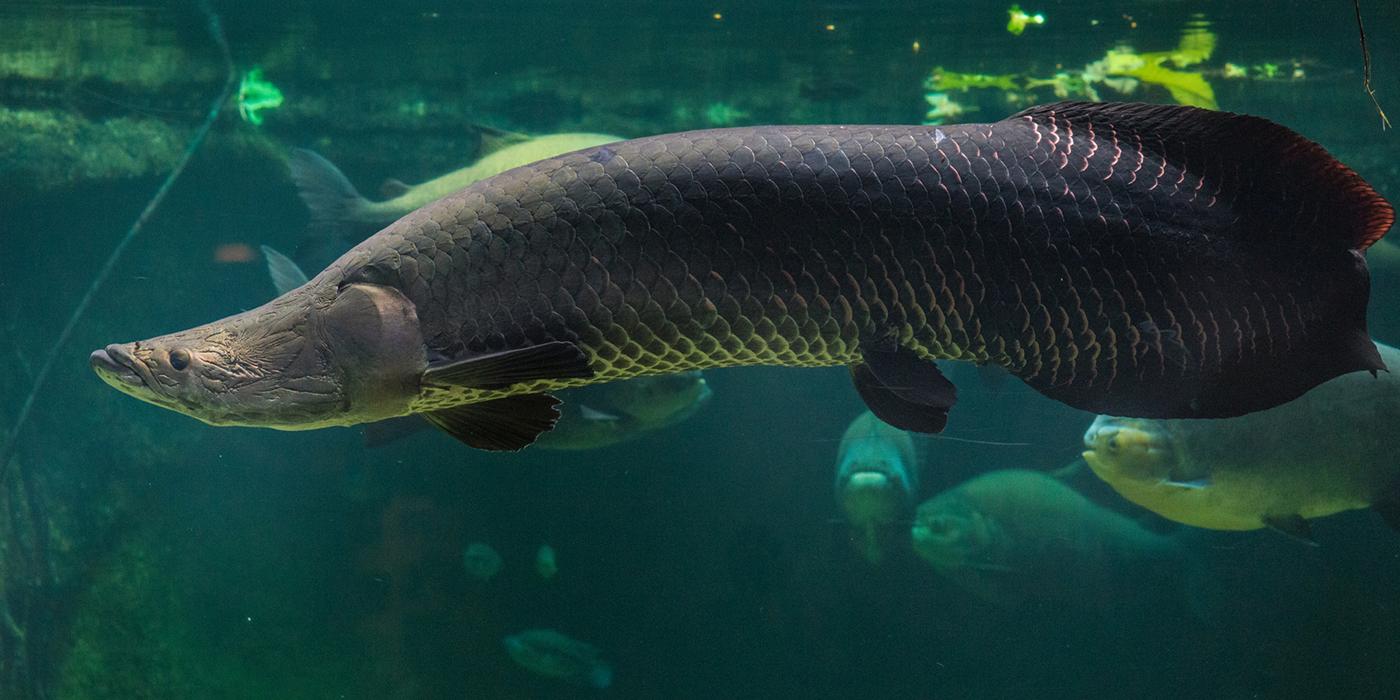New at the Zoo: Hawk-Headed Parrot
Meet the Zoo's handsome, 1-year-old hawk-headed parrot, Boomer! Since his debut in Amazonia’s rainforest exhibit last week, he has been exploring the aviary and mingling with his feathered and furry neighbors. Get to know Boomer in this Q&A with animal keeper Hilary Colton.
What is Boomer’s personality like?
Boomer started off quite reserved and shy. Now that he has had a few days to acclimate to his new surroundings, he has become a bit more bold in exploring the rainforest. With the addition of Boomer, we now have seven species of birds in the rainforest. They are free-flighted and able to interact with one another. Surprisingly, the yellow-rumped caciques have learned his call and are attempting to mimic it!
Boomer is a very tactile bird and explores the trees, plants and vines with his beak. He has already pruned several of the trees in the rainforest. One of Boomer’s quirks is that he prefers broccoli to sunflower seeds, which is unusual for a parrot!
What does he eat?
On a typical day, he receives a mix that includes at least two types of vegetables and a fruit. The variety changes based on what is in season. For example, he received peaches in late summer. Now that it is autumn, we give him apples. We also offer bananas, peas, corn, squash, mangos, grapes and celery. Occasional, he receives cashews, almonds and walnuts. His diet is served in a food pan, so he can eat at his discretion—as long as our titi monkey, Henderson, does not steal his food. We are monitoring all of our free-ranging animals closely to ensure everyone has a full belly.
What are your favorite facts about hawk-headed parrots?
These birds get their name from the “Mohawk” of red feathers on their heads, which they raise when they are excited, happy or angry.
Hawk-headed parrots vocalize with chirps and screeches, but can mimic the sounds of other birds, too. As Boomer becomes more at home in Amazonia, we will not be surprised if he begins to learn the calls of his new exhibit mates.
Last but not least: rather than build a nest, this species will lay eggs in a tree hollow, a behavior scientists call cavity nesting.
When is the best time to see Boomer?
Amazonia is open every day from 10 a.m. to 4 p.m. Because Boomer is still acclimating to the forest, he is frequently on the move and doesn’t have a routine schedule or a favorite hangout spot. Visitors hoping to see Boomer can try their luck at finding him themselves by following his loud calls. Or, for a helpful hint, just ask one of our animal keepers or Friends of the National Zoo (FONZ) volunteers.
This story was featured in the October 2018 issue of National Zoo News.
Related Species:



